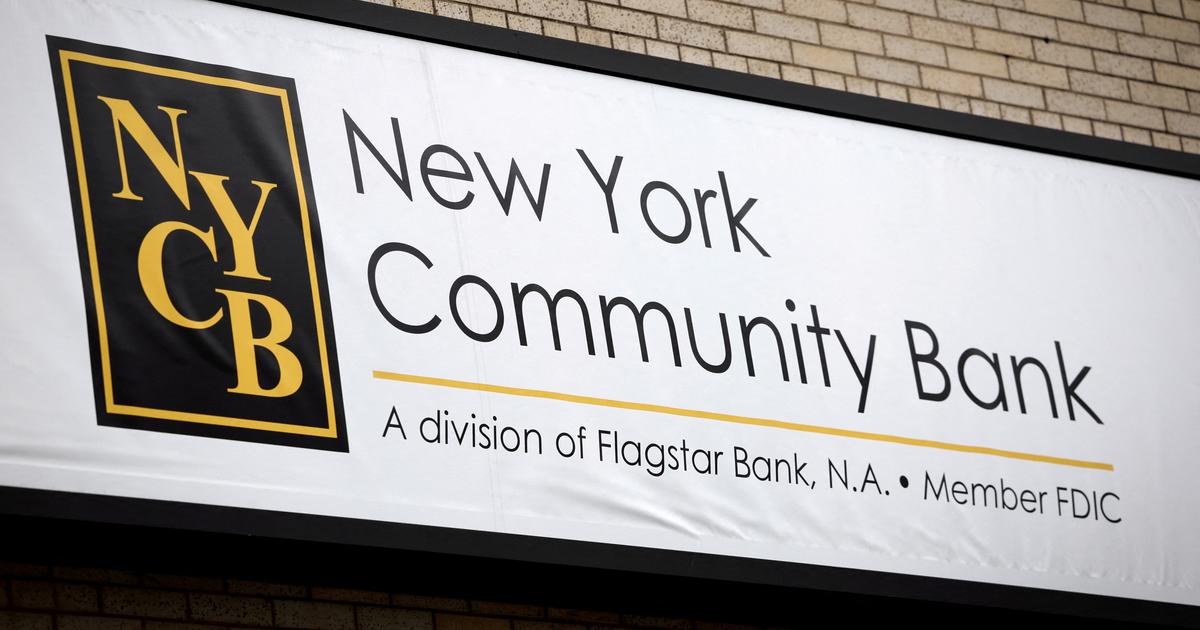What can the collapse of Silicon Valley Bank teach us about the technology industry?
For one thing, not much.
Police officers keep watch over bank customers waiting outside a Silicon Valley Bank branch in Wellesley, Massachusetts, USA.
EFE/EPA/CJ GUNTHER
It's true that SVB, as industry insiders called it, was a Silicon Valley institution, with many of the technology industry's best-known startups and investment firms as clients.
It is also true that the failure of the bank will have a
multiplying effect
on the entire technology sector in the short term because the companies that had their money deposited there will seek to withdraw their funds and pay their salaries.
But it wasn't lending to
risky startups
, betting on shady cryptocurrencies, or any other ill-considered tech scheme that contributed to the collapse of Silicon Valley Bank.
It was a traditional
banking panic,
triggered in 2021 by a series of bad decisions.
That year, the stock market was booming, interest rates were near zero, and money was flowing into the tech sector.
Many start-ups deposited their funds with Silicon Valley Bank, and the bank, in turn, took the funds and invested them in, among other things, a bunch of long-term bonds.
Those investments seemed relatively safe then, but they became riskier last year as interest rates rose and bonds lost some of their value.
This year, as technology investment slowed and start-ups sought to withdraw cash from the bank to pay their expenses, Silicon Valley Bank found itself having to sell some of its losing bonds and seek new capital to meet its obligations.
The bank could have survived all this, but when he explained to his clients (in a bad way) what had happened, some worried that the bank was in trouble.
VC investors were horrified and told their portfolio start-ups to
withdraw
all the funds they had deposited with SVB.
Other customers saw that and panicked too, and voila!
We have a bank run.
Maybe that's the only moral of the Silicon Valley Bank story:
If you're a bank and many of your clients are tech startups whose ability to raise funds fluctuates when interest rates rise, don't invest their deposits in long-term bonds that will lose value if interest rates rise.
But I think we can learn other lessons from this situation.
The first is that while
Silicon Valley Bank
was small by Wall Street standards (as of January, it was the
16th-
largest bank in the country, with around $200 billion in assets), it held a privileged place in the tech community.
Founded in 1983, the bank enjoyed a golden reputation within Silicon Valley.
He was known for taking risks with start-ups that no other bank wanted to do.
Last week, when it collapsed,
Several start-up founders told stories of getting their first business loans or credit cards from Silicon Valley Bank.
Some workers in the sector insured their home mortgages or car loans with that bank.
Relationships like these are valuable, and the chances are that, in the near future, Silicon Valley Bank will be acquired by a large Wall Street bank in a bankruptcy.
This big bank will take over Silicon Valley Bank's assets and liabilities, compensate its depositors, and no one will suffer catastrophic losses (except
SVB shareholders)
.
At best, there will be a quick and orderly transfer of Silicon Valley Bank's assets and liabilities to a new bank.
In the worst case, that is, no buyers emerge, the bank's clients will have to wait weeks or months to access their funds and the entire ecosystem of start-ups will collapse because many will not be able to pay their salaries, which would be catastrophic. .
The
second lesson
is that Silicon Valley Bank's clientele, who spend so much time online, may have contributed to its downfall.
At most average and midsize regional banks, what happened at Silicon Valley Bank might not have caused a bank run.
Banks sell assets all the time.
When they face liquidity problems, they raise short-term capital to solve them.
Most of the time, customers don't even know about it or aren't interested.
But SVB depositors are not normal customers.
They're startup founders and investors, the kind of people who scrutinize banks' securities registers, pay close attention to risk and volatility, and (most importantly) talk to each other all day online.
As soon as some in the industry started asking questions about the firm's solvency, Slack channels and Twitter profiles were activated with
dire warnings
from venture capitalists, and before long, many people were scared.
The third lesson we can learn from the collapse of Silicon Valley Bank is that
bank regulation works.
On Friday, as soon as it became clear that the bank would not recover, the Federal Deposit Insurance Corporation did what it always does when a bank fails:
stepped in, seized control, and attempted to compensate the bank's customers.
As a result, customers who had $250,000 or less on deposit in insured accounts will soon be able to access those funds.
Hopefully, a big bank will subsume the old SVB without a problem, compensate those who deposited larger sums and there will be no domino effect:
there will be no taxpayer bailouts, no mass start-up failures, just plain old bank failure.
In recent years, certain leaders in the technology sector have called regulators and government officials slow, corrupt and a drag on innovation (some of those same leaders pleaded with the government for bailouts on Friday).
But since Silicon Valley Bank was mostly a normal bank—not a liberalized cryptocurrency casino or fintech startup, where investors and depositors might have no recourse should their money disappear—the chances are that its failure is more of
an inconvenience
than a long-term crisis.
If that happens, Silicon Valley will have
regulation to thank
for helping it survive.
c.2023 The New York Times Company
look too
Regulators rush to contain fallout from Silicon Valley bank collapse
The IMF predicts that the world economy will grow less this year









